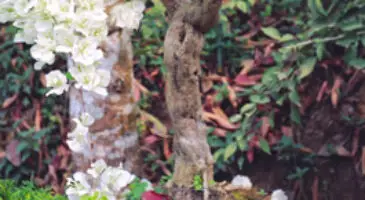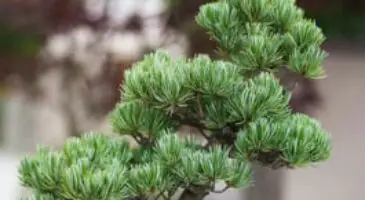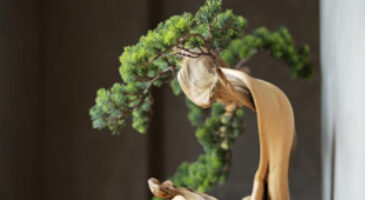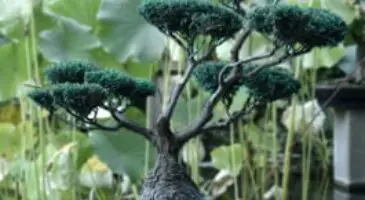Table of Contents
Vermiculite is not just a mineral that can sustain water. It is one of the most integral elements in gardening. Some people wonder if this inorganic mineral is safe for bonsai trees and plants. In other words, we’re curious, is vermiculite good for bonsai?
At the same time, we must know all about vermiculites and the potential safety levels they have before we answer the question. Other than answering the “Is vermiculite good for bonsai?” question, we’ll recommend you the appropriate vermiculite portions. You should execute the recommended ratios for your bonsai plants.
So, go on to read the points as you learn more about vermiculites and how they can be decent planting media for bonsai plants.
Is vermiculite good for plants
Like peat mosses and perlites, vermiculites are soilless growing mediums that you need to mix with other mediums to function well. By being the soilless planting mediums, vermiculites are cleaner than the mediums that require soils. In addition, vermiculites are superb in absorbing water and rich in nutrients.
So, are vermiculites beneficial for plants? While “yes” can appear to be the answer, vermiculites alone won’t help plants grow. That’s why we need a potting mix. Fertilizers are among the most frequent components to present in a potting mix that contains vermiculite.
Another downside that vermiculite has is that its ability to provide aeration to your plants is not on par with perlites. This disadvantage is one of the disadvantages of using vermiculites for your plants.
We’ll discuss more of the vermiculites’ disadvantages over the next few points. Before we do so, let us see what do vermiculites do for your plants.
What does vermiculite do for plants
Water is one of the most evident strengths that vermiculites contribute to your plants. Even though vermiculites have a neutral pH level, they can uplift your plants’ pH levels. Their abilities to absorb and retain water are also more superior than perlites or other soilless mediums.
At the same time, you can use them together with some amounts of perlites to generate more oxygen resources. In other words, these ways are the ways that you can do to cover the aeration weaknesses that the vermiculites have.
These oxygen resources will eventually reach your plants’ roots. Then, your plants will be more able to breathe and will get moister. If you use soil for your plants, vermiculites can interact with your plants’ soil thanks to their richness of nutrients.
In particular, these “wormy” planting mediums interact with the potassium, calcium, and magnesium in the soil. Since these three minerals encourage growth in a living being (including plants), vermiculites’ presence will help nourish your plants’ growth.
Is vermiculite safe
So far, we’ve described how vermiculites have fantastic benefits to our plants. We often find them in various potting mixes. Indeed, we can mix them with perlites, gravels, rocks, coarse sands, or other gardening elements. The aim is to ensure they work together in providing water, nutrients, and oxygen to our plants.
However, given the many fantastic benefits they have, we may wonder if using vermiculites is a safe choice for us or not. After all, mining is a part of processing vermiculites, and not all mining sites produce safe materials for everyday uses.
A mining site in Montana mixed vermiculites with asbestos minerals. Such a case is a case that may make us worry about the safety of vermiculites. Yet, the site has been closed since 1990. So, we don’t need to worry because vermiculites are safe.
Still, when we plant using vermiculites, we need to equip ourselves with gloves. Before we get started with our vermiculites, we need to store them in a dry, cool place. Always aim to keep them away from weedkillers and other harmful chemicals so the vermiculites won’t harm our plants’ growth.
What are the disadvantages of vermiculite for plants
Aeration is one of the vermiculites’ weaknesses that we should consider. While vermiculites can provide aeration to our plants, their aeration strengths are not as robust as perlites. Their neutral pH of 7 doesn’t even help. Even perlites can have 0.5 more pH than vermiculites.
Vermiculites’ watering strengths can be the boomerang for some types of plants. When you apply vermiculite-based mixes to the unsuitable plants, there are chances that your plants will get too moist even if you don’t overwater the plants. At some points, the chemical compounds in vermiculites can foster alkaline reactions, which are dangerous for your plants’ roots.
Being a non-renewable resource also makes vermiculite challenging to use for planting purposes. Besides, not many gardeners know vermiculites. So, it may be difficult for you to find vermiculites in marketplaces that focus on selling retail home gardening products.
What plants need vermiculite
Vermiculites are great when your plants need high moisture levels. This trait makes vermiculites great for cactuses or other similar plants. In particular, vermiculites are super-effective for potted plants.
Unlike composts, vermiculites won’t break down in your plants’ soil. When it rains or when you water your plants, the vermiculites will hold the water. Once your plants’ soil is dry, the vermiculites will release the water around your plants’ anatomy, resulting in much more healthier-looking plants.
Maidenhair ferns and peace lilies are two of the plants that need vermiculites. Other plants that grow in hot climates and require more watering will have fantastic growth rates if their potting mix bases comprise at least 30% vermiculites.
Can I use vermiculite for bonsai plants
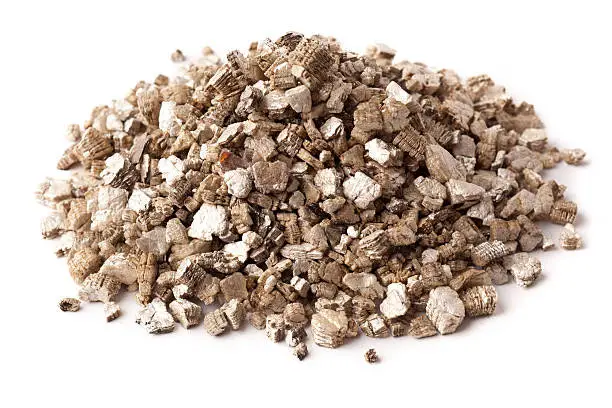
Bonsai plants are the plant types that need more water than the taller and wider-leaved plants. Since all bonsai plants thrive in high-moistured environments, adding vermiculites to your bonsai plants’ mix bases is a wise choice that you can apply.
Many bonsai artists combine vermiculites with peat mosses to enhance bonsai plants’ root growth. In such combinations, peat mosses work by balancing the chemical and biological interactions in bonsai plants. You can combine your vermiculites with peat mosses in many bonsai plant types.
At the same time, there are situations where you can’t use vermiculites for your bonsai plants. Those conditions are when your bonsai plants are vegetable-based plants, such as bonsai cabbages. Vegetable plants are already full of water, and using vermiculites will only overwater them.
Do bonsai like vermiculite
Every bonsai plants need more water, and providing high amounts of water (and moistures) is the strength of vermiculites. Meanwhile, the core question remains: Is vermiculite good for bonsai? In other words, do bonsai ever love vermiculite?
Surprisingly, vermiculites don’t suit all of the bonsai plants. Sure, vermiculites are great for some bonsai plants that have evident needs for water. Many bonsai ferns, bamboo trees, and cactuses fall into these categories.
Other bonsai types, particularly those that belong to the vegetable-based bonsai plants, are not that friendly with vermiculites. Therefore, you may consider the bonsai types you have before you apply vermiculites to them.
Will vermiculite kill bonsai trees
Vermiculites tend to be beneficial to bonsai trees even though they have some disadvantages. That characteristic makes it impossible for us to think that these “wormy” planting mediums can directly kill bonsai trees.
Again, it all depends on the plant growers’ behaviors and tendencies. Even though bonsai trees need water, vermiculites can provide gigantic water supplies, and watering is a daily routine that every grower should do, overwatering can be the death cause of bonsai trees.
Often, bonsai trees experience root rot after some periods of overwatering. Apart from overwatering, choosing the appropriate planting medium mixes can be something we should do. This action’s purpose is to prevent accidentally killing our bonsai trees.
Bonsai trees may appear like tiny versions of the actual trees. Nonetheless, their treatments can be completely different. For example, vermiculites with peat mosses are effective for bonsai trees but not so effective for their larger versions.
How often should I put vermiculite on my bonsai tree
The amounts and frequencies you should put your vermiculites in the planting mixes depend on the bonsai soils’ conditions. The drier the bonsai soil, the more percentages of vermiculites you should include in your mixtures.
Since vermiculites are rare in gardening stores, most bonsai growers recommend having perlites than vermiculites. You can apply the 4:1 ratio between perlites and vermiculites for some bonsai trees and plants.
If you decide to have other planting mediums in your mixes, sphagnum mosses are your best choice. In such cases, the ratio can be 2:2:1 for perlites, sphagnum mosses, and vermiculites. You can switch back the ratio to 2:1:2 for the three planting compounds.
After you’ve put the vermiculites to your bonsai trees, place the trees so they will come in contact with direct sunlight. Do this step every morning for at least four hours.
Finally, we can say that vermiculites are beneficial planting mediums. We can be confident that these “wormy” soilless mediums are safe to use, just like when you use perlites, sphagnum mosses, and other planting mediums.
“Is vermiculite good for bonsai?” “Yes” – On the other side, not every bonsai will do. Examine your bonsai types before you apply the vermiculites. Refer to this article whenever you feel confused.
